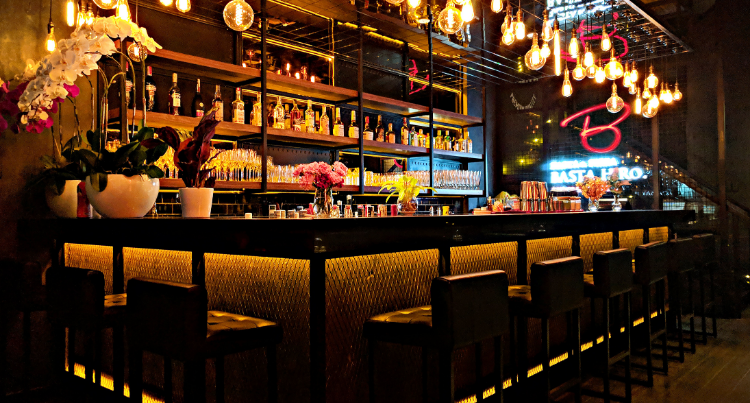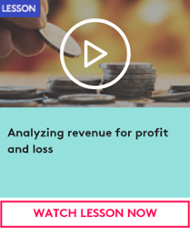When it comes to beverage costing and sales, it can be pretty easy to think you can get away with taking a 'guesstimate' approach with stocking and revenue. A little bit over here, a little bit under there - it all pretty much evens out, right?
We wish! As with everything in business, there's doing it the easy way, and there's doing it the right way. So if you want to not only drive revenue but really maximize your profit margins on beverages, Mike Walmsley is here to explain how.

Alcoholic beverages are usually grouped under liquor, beer, and wine for a variety of reasons, but a big part of it is to do with alcohol content. Generally, liquor has the lowest cost of sale, wine has the highest, and beer is somewhere in the middle.

So because of this, understanding your sales mix is the key to knowing how to price your beverage menu! You want a fair and attractive price point for your customers, of course, but you also need to make sure you're paying attention to your bottom line and actively driving revenue.
It's a fine line to walk. How can you tell which side of the line you're on? You might look at your beverage cost to revenue ratio and think, 'Okay, my beverage cost ratio for last month was 32%. Is that good?'
Well, let me explain.
The importance of sales mix
First, what is a sales mix?
Pretty much exactly what it sounds like - the mix of different products you sell over a set period. If you were to evenly sell liquor, wine, and beer over a month, your sales mix for that month would be 33.3% liquor, wine, and beer.
(Tip: you can also work out your sales mix within those categories to figure out your ideal premium/budget ratio.)
If your venue is a nightclub or a cocktail lounge where your sales were predominantly made of liquor sales - (50% or more) - 32% cost of sales is too high. You're probably spending too much on wine and beer for how much you sell!
If you were a pub, or a pub-style restaurant where your beverage sales were mostly beer and draft beer, 32% may be about right.
The better you can understand your sales mix, the better you can see the potential influence on your overall beverage cost.
These samples might help us better understand the influence of sales mix:
Sample one: Cocktail lounge
| |
LIQUOR
|
WINE
|
BEER
|
TOTAL
|
|
Cost ($)
|
15,000
|
8,000
|
9,000
|
32,000
|
|
Proportion of mix (%)
|
46.9
|
25.0
|
28.1
|
100.0
|
Sample two: Pub
| |
LIQUOR
|
WINE
|
BEER
|
TOTAL
|
|
Cost ($)
|
9,000
|
8,000
|
15,000
|
32,000
|
|
Proportion of mix (%)
|
28.1
|
25.0
|
46.9
|
100.0
|
With the total sales for each of these samples the same, the distribution of sales - the sales mix - is different. In sample two, your total spend is the same, but the profit margin will be lower on beer than on liquor.
So although it looks the same at first glance, your bottom line is actually taking a big hit!
This is your first step - figure out your sales mix as precisely as possible.
Where should I look to make improvements in my beverage cost?
Let's start with sample one.
Here, liquor sales make up the lion's share of overall beverage sales. Since this is demonstrated to be your biggest seller, can you increase overall sales by upselling and offering a premium product in place of the regular rye and coke? Or offering new or seasonal cocktails along with cocktail specials?
Take the opportunity to revisit standardized serving sizes for all cocktails and highballs. Look at standardized recipes for all cocktails. When is the last time you reviewed these and made any needed adjustments to recipes or price?
Improve the profits at your hotel or restaurant.

Learn tips on Typsy.com
Now, let's check out sample two.
In this scenario, the majority of your sales are driven by beer. As we've talked about, beer generally has a higher cost of sales than liquor, and as a result your cost of sales likely skews higher than in sample one.
Even with a higher cost of sales, there are still opportunities to reduce cost and increase sales. Many industry reports note that some of the highest loss rates in the beverage industry come from draft beer - sometimes over 20%.
A reduction of half of this would result in a significant shift in your bottom line. Surprisingly there are often easy fixes for losses from draft beer. Better staff training is one way.
There's also letting kegs “settle” for a period of time, to reduce the overactive foaming of a newly tapped keg, meaning a higher yield from each keg. And draft beer suppliers are also usually very eager to work on product promotions that can enhance sales.
Calculating product leakage
You might also know this as shrinkage - units that are missing from your inventory but don't appear to have been 'sold'.
To get a clearer picture, let's use the example of one particular brand of bottled beer - "Beer A":
|
|
AMOUNT SOLD
|
UNIT COST
|
TOTAL COST
|
SELL PRICE
|
REVENUE
|
COS (%)
|
|
Beer "A"
|
15
|
$2.10
|
$31.50
|
$5.95
|
$89.25
|
35.3
|
So in this example, a reading from our POS system tells us that we sold 15 bottles of Beer “A” today. But let's say a closing inventory count shows us that we're actually down 18 bottles from yesterday's close. Our revenue hasn’t changed, but our inventory has.
Plug in the numbers: with 18 consumed and no additional sales to report, our COS percentage jumps from 35.3 to 42.2%! So where are the three missing bottles?
You can investigate a few different routes when looking for shrinkage:
- The items have been given away for free to staff or friends of staff
- They were stolen
- The items were entered on the POS system as Beer “A”, but actually Beer “B” was sold
- There was a mistake in the opening or closing inventory or the quantity issues to the bar.
Each one of these are a possible cause for the discrepancy. Only your intimate knowledge of your establishment will lead you to the most likely response to this problem.
This is a very simplified example, but imagine this playing out on a larger scale across several beverage items, and it's easy to see how getting an answer to this issue can make a big difference to how you interpret your sales mix - and, ultimately, how how profit you can bring in.
What is one beverage item you can pick today and start improving its potential? You’d be surprised how quickly other items will follow!
Have a hospitality question? We’re always here to help you learn.
You might also like